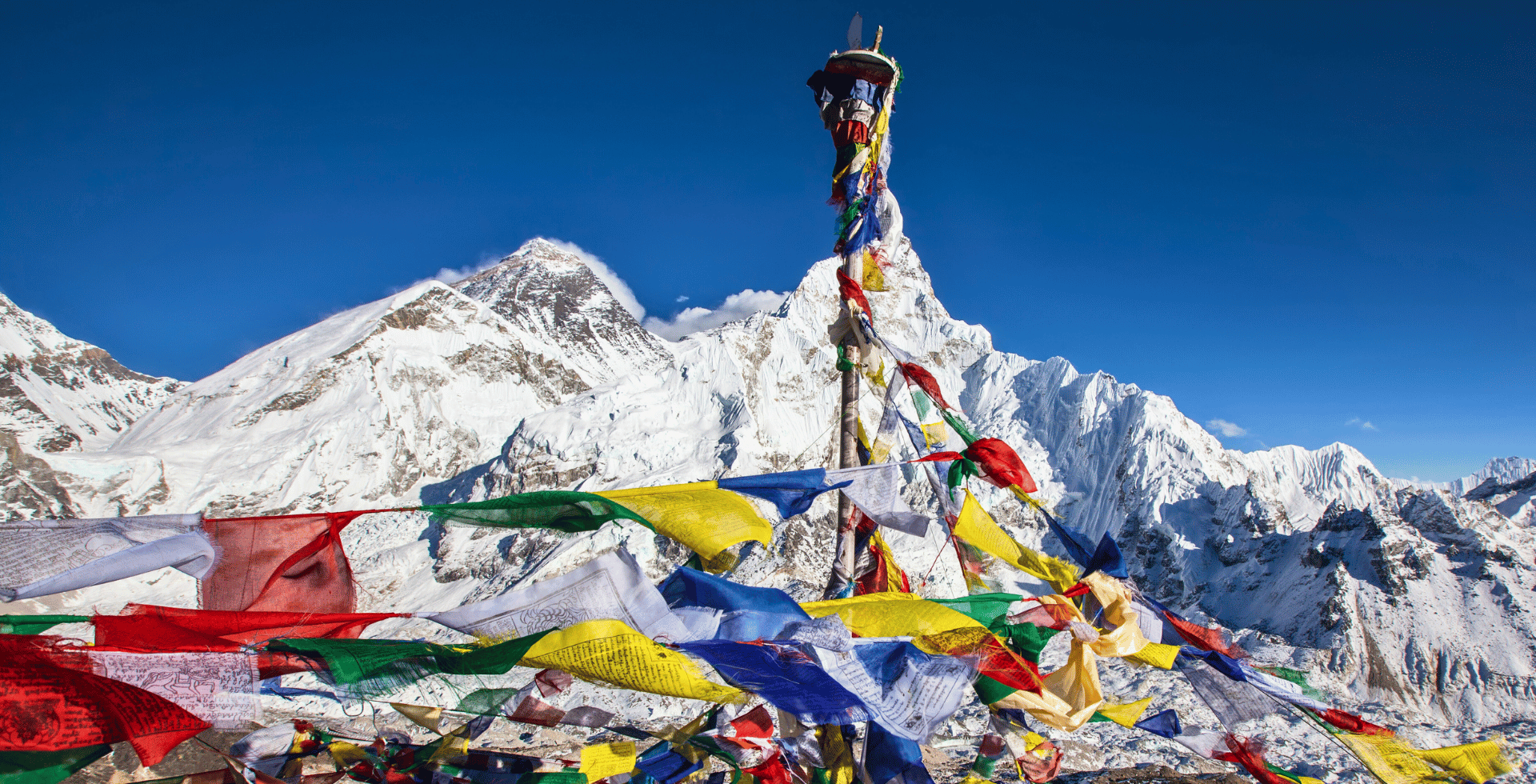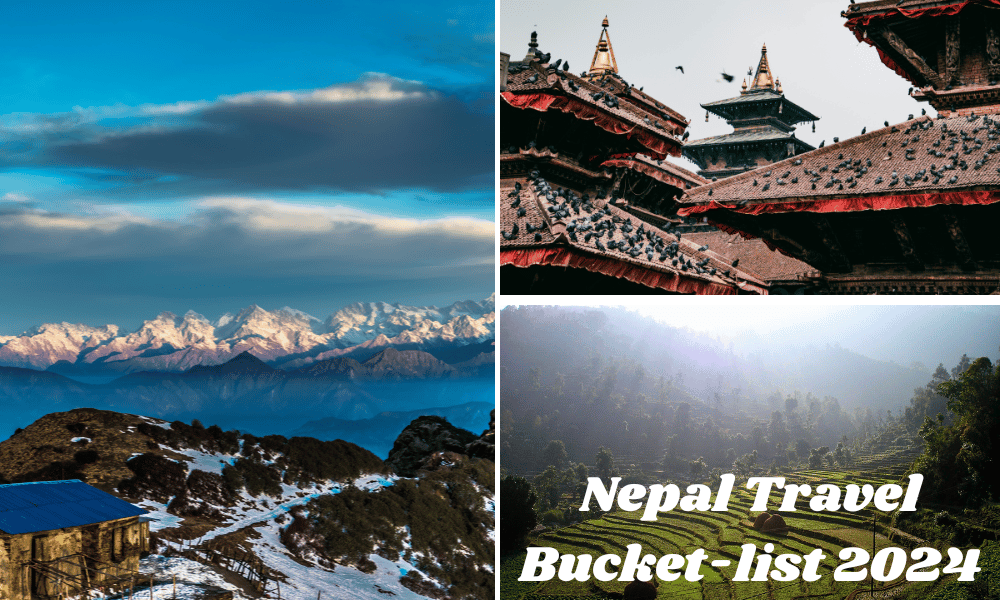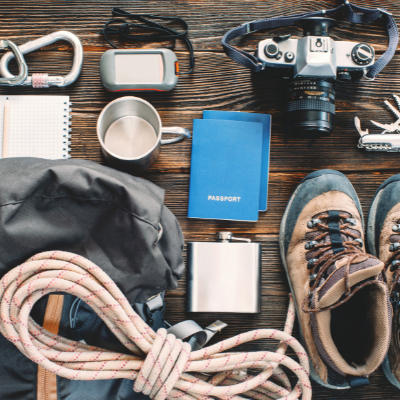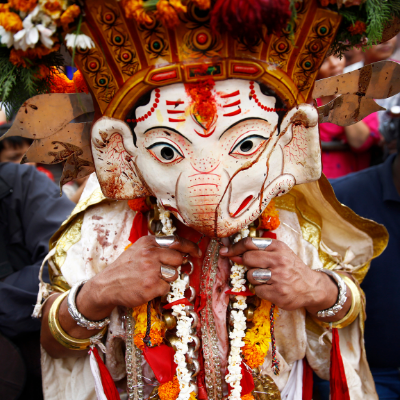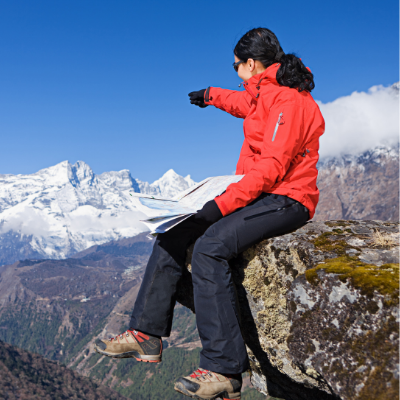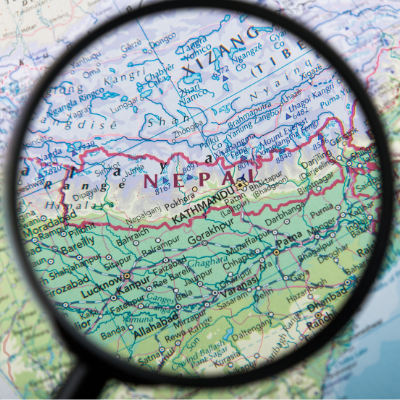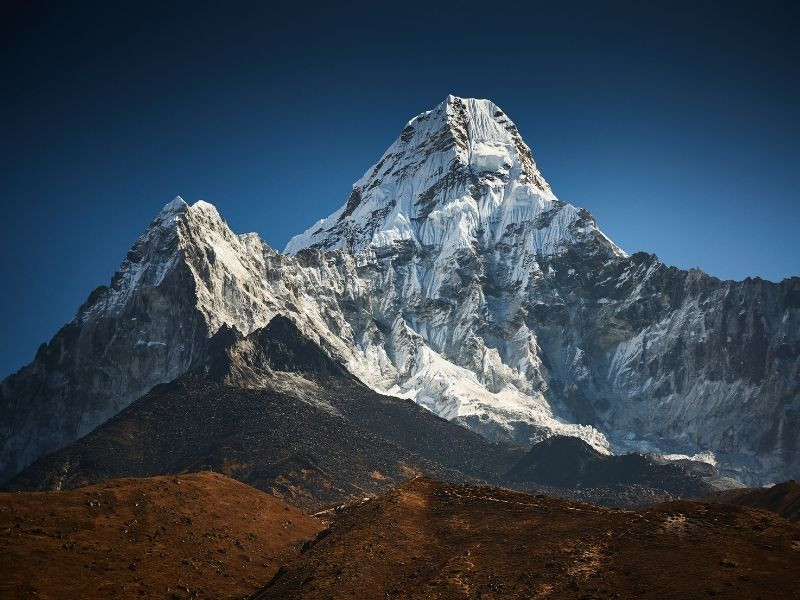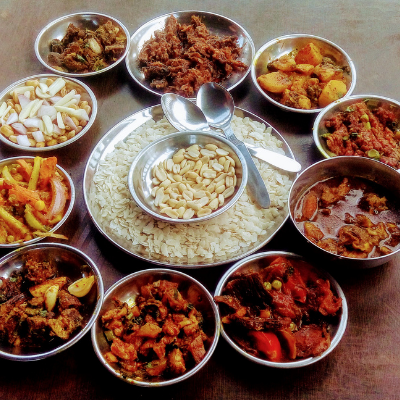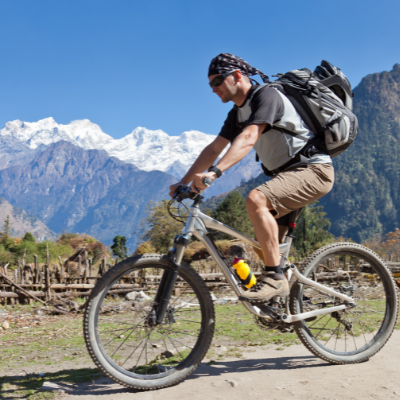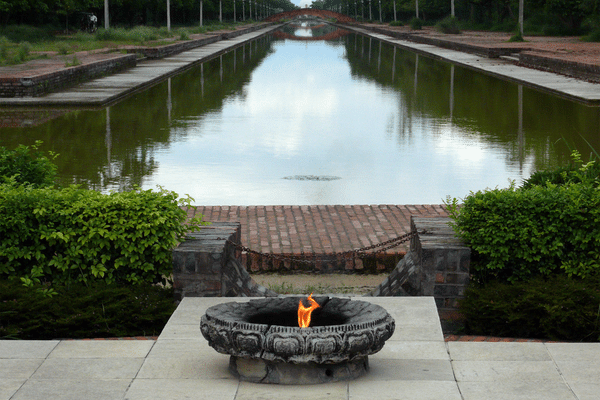Did we convince you yet to visit Nepal for your 2025 adventure? Okay, now that we have your attention, let's go through what places you must visit on your tour to make the most out of your time. These are some of the most tourists popular spots sure to leave you amused and amazed at the diversity of Nepal's attractions.
Kathmandu Valley: The Heart of Nepal
The capital city of Nepal, Kathmandu, and its surrounding valley are a vibrant mix of the old and the new. From bustling markets and squares to serene temples and stupas, Kathmandu Valley is an incredible place to immerse yourself in Nepali culture, history, and day-to-day life.

Kathmandu City
At the heart of the city lies the UNESCO World Heritage Site of Kathmandu Durbar Square, a historical royal plaza showcasing the prowess of traditional Nepalese architecture. The square hosts an array of temples, palaces, and courtyards dating back to the 15th century.
A few kilometers away is Thamel, the city's bustling tourist hub. Known for its narrow alleys crammed with craft shops, boutique cafes, trekking gear stores, and street food stalls, Thamel is the perfect place to shop for souvenirs and sample local cuisines.
Swayambhunath and Boudhanath Stupas
Often referred to as the Monkey Temple, Swayambhunath is one of the oldest and most revered Buddhist sites in Nepal. Perched atop a hill, the stupa offers a panoramic view of Kathmandu city.
Boudhanath, another iconic Buddhist stupa, is one of the largest spherical stupas in Nepal. The stupa's vibrant atmosphere, with fluttering prayer flags and the murmur of mantras, makes it a peaceful yet lively place to visit.
Pashupatinath Temple
One of the most sacred Hindu shrines in the world, Pashupatinath Temple, is located on the banks of the Bagmati River. The temple complex is a UNESCO World Heritage Site and a hub of religious activities during festivals like Maha Shivaratri.
Patan and Bhaktapur

The twin cities of Patan and Bhaktapur, located in the Kathmandu Valley, are known for their ancient arts and architecture. Both cities host their Durbar Squares, with intricately designed temples, palaces, and statues. Lalitpur city and Patan Durbar Square areas are also famous for their metalwork and Thangka paintings, while Bhaktapur Durbar Area is renowned for its pottery.
Chandragiri Hills
A short drive from the city will take you to Chandragiri Hills, offering a spectacular view of the Kathmandu Valley and the panoramic Himalayas. The cable car ride to the top is a thrilling experience.
Whether it's exploring the city's ancient heritage sites or meandering through its colorful and bustling streets, Kathmandu Valley offers a fascinating and diverse cultural experience. As the gateway to the rest of Nepal, it's the perfect starting point for your 2025 Nepalese adventure.
Pokhara: The Lake City with Majestic Annapurna Backdrop
Nestled between the serene waters of its lakes and the majestic peaks of the Annapurna range, Pokhara is undoubtedly one of the most picturesque cities in Nepal. Often dubbed the "Tourist Capital," this city is the perfect blend of natural beauty and modern amenities, offering visitors a myriad of experiences.
Phewa Lake

The jewel of Pokhara, Phewa Lake, is the second-largest lake in Nepal. With colorful boats bobbing on its tranquil waters and the stunning reflection of the Annapurna range, it's a sight to behold. On the eastern shore, you'll find a bustling waterfront lined with restaurants, shops, and hotels. On a small island in the middle of the lake is the Tal Barahi Temple, a significant religious site for Hindus.
Annapurna Range Views
Pokhara offers breathtaking views of the Annapurna massif, including Annapurna I, the tenth-highest peak in the world, and the stunning Fishtail Mountain, also known as Machapuchare. Sarangkot, a hilltop just a short drive from the city, is a popular spot for witnessing spectacular sunrise and sunset views over the Himalayas.
Adventure Sports
Pokhara is also the adventure capital of Nepal, with numerous options for adrenaline junkies. Paragliding from Sarangkot, zip-lining at the world’s longest zip line, ultralight flights for panoramic views, and white-water rafting in the Seti River are among the top choices.
Trekking
Pokhara is the gateway to the Annapurna region, offering numerous trekking trails. The most popular ones include the Annapurna Base Camp trek and the Poon Hill trek. These trails wind through lush forests, terraced farms, traditional villages, and offer awe-inspiring mountain views.
Caves and Waterfalls
The city is home to several natural wonders like the Davis Falls, a unique waterfall that directly flows into a narrow and deep canal that has no end. Gupteshwor Mahadev Cave, located close to Davis Falls, is another natural attraction where you can see a Shiva shrine and limestone deposits.

International Mountain Museum
The International Mountain Museum is a must-visit for those interested in mountaineering history and the Himalayas' geography and culture.
From leisurely boat rides and lakeside strolls to adrenaline-pumping adventure activities and challenging treks, Pokhara offers experiences that cater to all kinds of travelers. Its tranquil yet vibrant atmosphere combined with natural beauty makes it an unmissable spot on your 2024 Nepal bucket list.
Lumbini: The Birthplace of Lord Buddha
Lumbini, located in the Terai plains of southern Nepal, holds immense spiritual significance as the birthplace of Siddhartha Gautama, who later became known as Lord Buddha, the "Enlightened One." This sacred site, recognized by UNESCO as a World Heritage Site, draws pilgrims and tourists from all around the world who come to pay homage, meditate, and learn more about the life of Buddha.

Mayadevi Temple and the Sacred Garden
The heart of Lumbini is the sacred garden, which houses the Mayadevi Temple. This temple, named after Lord Buddha's mother, Queen Mayadevi, is believed to be the spot where Lord Buddha was born in 623 BC. Inside, you can see an ancient stone carving depicting Mayadevi clutching a tree branch during Buddha's birth.
Adjacent to the temple is the sacred pond, Puskarni, where Mayadevi is said to have bathed before giving birth. The garden also features the Ashoka Pillar, erected by Emperor Ashoka in 249 BC, which served to confirm Lumbini as the birthplace of Buddha.
Monastic Zone and the World Peace Pagoda
The monastic zone, divided into the eastern Theravadin monastic zone and the western Mahayana and Vajrayana monastic zone, features monasteries and temples built by various countries, each reflecting different architectural styles. They provide a unique opportunity to witness the different interpretations of Buddhist architecture around the world.
The World Peace Pagoda, also known as Shanti Stupa, stands as a symbol of peace and harmony. The stupa is beautifully white, with a golden statue of Lord Buddha in his posture at the time of his birth.
Lumbini International Research Institute
For those interested in Buddhist texts and art, the Lumbini International Research Institute provides a wealth of resources. It houses thousands of books and serves as a center for research about Buddhism and Himalayan culture.
Meditation and Spiritual Retreats

Numerous meditation centers in Lumbini offer courses or spaces for individuals seeking spiritual retreats. These centers, such as the Panditarama Vipassana Center, offer tranquil environments for intensive meditation and mindfulness practice.
A visit to Lumbini offers an opportunity to delve deeper into the teachings of Buddha and the origins of Buddhism. It's a place of tranquility, reflection, and deep historical and spiritual significance. Whether you're on a spiritual journey or interested in history and culture, Lumbini is a destination that promises a truly enlightening experience for your 2025 Nepal trip.
Chitwan National Park: An Unforgettable Jungle Safari Experience
Chitwan National Park, situated in the lush Terai plains of southern Nepal, offers one of the best wildlife-viewing experiences in Asia. It was the first national park established in Nepal in 1973 and has been listed as a UNESCO World Heritage Site since 1984. Here's what you can expect during your visit to Chitwan National Park.
Wildlife in Chitwan
The park is renowned for its diversity of ecosystems, including forests, marshlands, and grasslands. This variety of habitats makes it a haven for a rich assortment of wildlife. The park is particularly known for its protection of the One-Horned Rhinoceros, Royal Bengal Tiger, and the Gharial Crocodile.

Other animals you might spot include leopards, sloth bears, wild boars, deer, monkeys, and an impressive variety of bird species, making Chitwan a birdwatcher's paradise. If you're incredibly lucky, you might even spot the elusive Gangetic dolphin in the Narayani-Rapti river system within the park.
Jungle Safari Experiences
Exploring the park can be done in several ways, each offering a unique perspective.
Elephant Back Safaris: These are the most popular ways to explore the park. Seated high on the back of an elephant, you can venture deeper into the forest, getting closer to wildlife, particularly the One-Horned Rhinoceros.
Jeep Safaris: A more comfortable, ethical, and quicker option is the Jeep Safari. The vehicles can cover larger areas, increasing your chances of spotting wildlife.
Canoe Trips: Floating down the Rapti or Narayani rivers in a canoe offers a peaceful perspective on the park. It's an excellent opportunity to see aquatic birds, crocodiles, and animals that come to the riverbanks for a drink.
Guided Jungle Walks: For the more adventurous, guided walks offer the chance to experience the park up close. These walks are great for bird watching and spotting smaller animals.
Tharu Cultural Experience: Chitwan is not just about wildlife. It's also home to the Tharu people, an ethnic group indigenous to the Terai. You can learn about their culture, traditions, and way of life by watching their cultural performances and visiting their villages.
Everest Base Camp: the ultimate trekking experience.

Trekking to Everest Base Camp (EBC) is a dream for many outdoor enthusiasts and rightfully takes its place on many adventure bucket lists. Standing at the foot of the world's tallest peak, Mt. Everest (Sagarmatha in Nepali), is an achievement in itself and offers experiences that are nothing short of epic.
The Trek
The classic EBC trek begins with a thrilling flight to the Tenzing-Hillary Airport at Lukla, known as one of the world's most dangerous airports due to its short runway and challenging weather conditions. From Lukla, it takes about 12-14 days to trek to Everest Base Camp and back. The trek passes through Sherpa villages like Namche Bazaar, Tengboche, Dingboche, and Lobuche, each offering breathtaking views of the Himalayas.
The trail winds through the Sagarmatha National Park, a UNESCO World Heritage Site, offering close encounters with unique flora and fauna. The climax of the trek is reaching the base camp at 5,364 meters, followed by the ascent to Kala Patthar (5,545 meters), a viewpoint known for providing the most accessible view of Everest's peak.
The Experience
The EBC trek is not just about the destination. It's about the journey, the hardships and joys experienced along the trail, the bond formed with fellow trekkers, and the interaction with the warm and welcoming Sherpa community. It's about witnessing the grandeur of the Himalayas, where every turn offers a new stunning view, and breathing in the crisp, thin air that whispers tales of mountaineering legends.

Acclimatization and Fitness
Due to the high altitude, acclimatization days are built into the trek to avoid altitude sickness. Although the trek is not a technical climb, it does demand a good level of physical fitness, stamina, and mental determination.
Best Time to Trek
The best times to embark on this journey are pre-monsoon (March to May) and post-monsoon (September to December), offering more predictable weather, better visibility, and a more pleasant climate.
Tea Houses and Lodging
Along the trail, tea houses offer basic accommodation and meals, giving trekkers a chance to rest, refuel, and socialize. They provide a unique cultural insight into the lives of the local Sherpa community.
For those seeking the thrill of high-altitude trekking, the Everest Base Camp trek is an unparalleled journey. It's an adventure that challenges you, reveals the raw beauty of the Himalayas, and rewards you with an extraordinary sense of accomplishment. Make sure to include this in your Nepal travel bucket list for 2025 - after all, standing in the shadows of the world's tallest peak is a once-in-a-lifetime experience.
Annapurna Circuit: A Breathtaking Trekking Adventure

The Annapurna Circuit, another iconic trekking route in Nepal, offers a stunning and diverse range of landscapes, from emerald terraced fields to snow-capped mountains. Known for its exceptional beauty and cultural diversity, it is considered one of the best long-distance treks globally.
The Trek
The full circuit trek typically takes 15-20 days and traverses a variety of terrains, including lush forests, alpine meadows, desert plateaus, and high mountain passes. The trek encircles the Annapurna Massif, passing through several peaks over 7,000 meters and reaching its highest point at Thorong La Pass (5,416 meters).
Major Highlights
Thorong La Pass: It's the highest point of the trek, offering a sense of accomplishment and breathtaking panoramic views of the surrounding snow-capped peaks.
Manang: This beautiful village located in the Manang District is the perfect place to rest and acclimatize. The unique culture of the Manang people, combined with the stunning views of Annapurna III, Gangapurna Lake, and the Marsyangdi River, make this a memorable stopover.
Muktinath: This sacred site for both Hindus and Buddhists is a significant stop on the circuit. The Muktinath temple complex features 108 waterspouts in the shape of cow heads, where pilgrims cleanse themselves of sins.
Marpha: Known as the "apple capital" of Nepal, Marpha is a charming Thakali village with well-preserved traditional houses, cobbled streets, and beautiful apple orchards.
Ghorepani Poon Hill: Though not part of the original Annapurna Circuit, many trekkers take a detour to this famous viewpoint, known for its sunrise view over the Annapurna and Dhaulagiri ranges.
The Experience
The Annapurna Circuit is more than just a trek; it's a journey through the heart of Nepal. Trekkers will encounter rich cultural diversity, with communities from various ethnic groups such as Gurung, Manangi, Thakali, and Magar. The tea houses along the trail offer delicious local food and a unique cultural exchange.

Best Time to Trek
The most popular times for the Annapurna Circuit are the pre-monsoon (February to May) and post-monsoon (September to November) seasons. These times provide clear skies, allowing trekkers to fully appreciate the stunning vistas along the trek.
Fitness and Preparation
This trek is of moderate difficulty, requiring a good level of fitness. Proper acclimatization is essential to avoid altitude sickness.
For trekkers looking to experience the diverse landscapes, cultural richness, and grandeur of the Himalayas, the Annapurna Circuit is a must-add to your 2025 Nepal travel bucket list. It promises an unforgettable journey through some of the most dramatic and beautiful landscapes on Earth.



